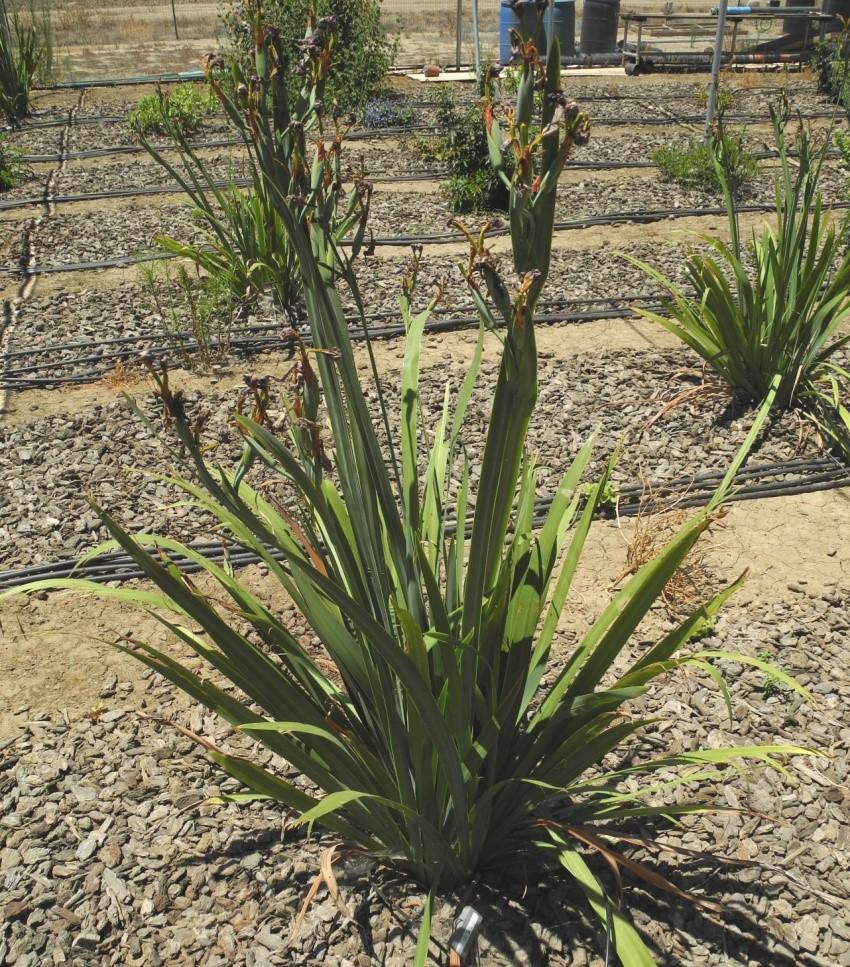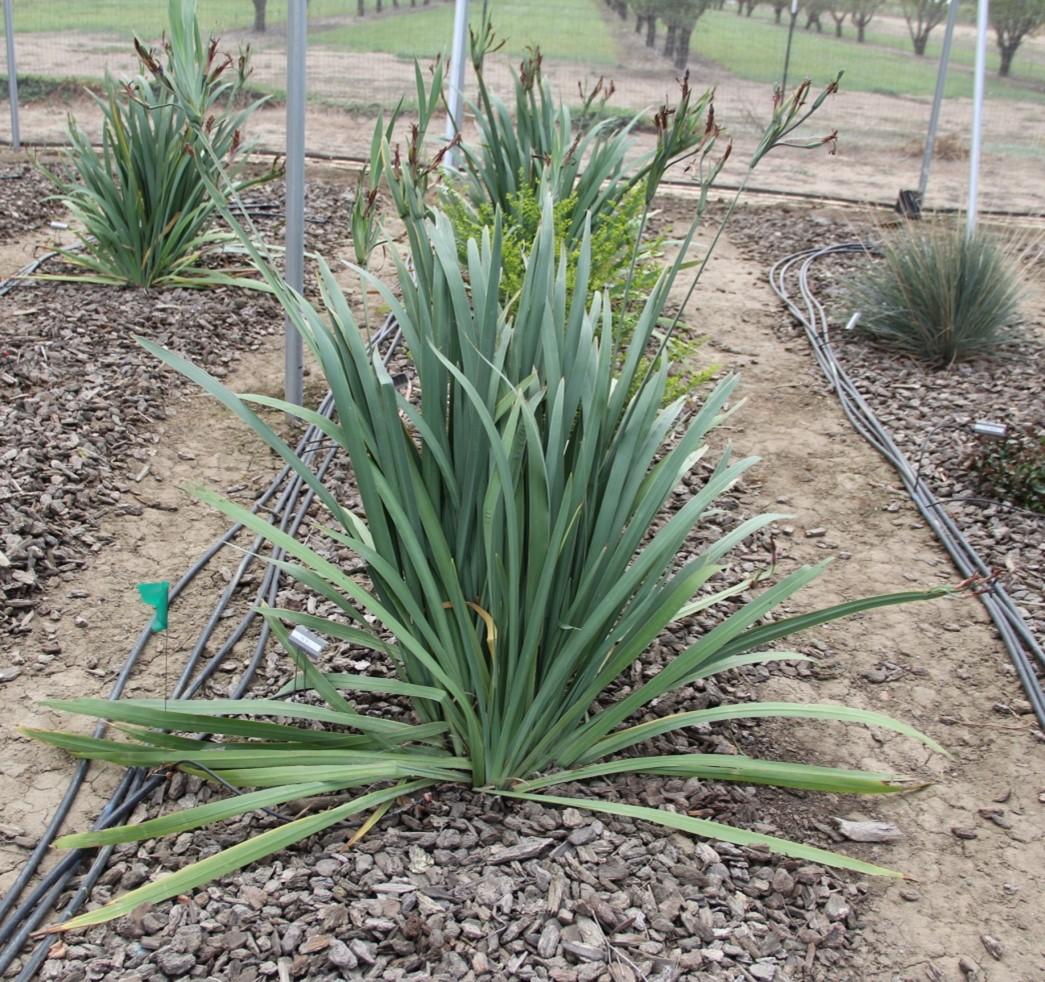Walking Iris
Neomarica caerulea

Summary
The walking iris is a little grown plant, but with potential for dry shade gardens since its foliage is tall and striking throughout the year. The only notable difference in size between treatments was a slight advantage of the 80% over the 20% during the last two months of summer. The significance of the difference faded, however, with the first fall rain. As with the Festuca, the highest overall appearance ratings did not go to the largest plants but to the smallest on the 20% treatment. This is understandable when you take into consideration that taller more succulent leaves are prone to bending over in the breeze and creasing. The 80% treatment did have the highest flowering rating, but the flowers, though beautiful, are small, very fleeting, and not the main feature of this plant.
In conjunction with the trials, bush germander was also grown in several UCCE Master Gardener demonstration gardens throughout California. As a part of the trials, UCCE Shasta County plants suffered irreparably from frost damage and never fully recovered. Both Ventura and Orange County recommended the iris for their area as a tall striking plant for dry shade.
Basic Info
| Submitted by: | UC Davis Arboretum |
| Trial Exposure: | 50% Shade |
| Year evaluated: | 2013 |
|
Height & Width
(after 2 years):
|
40" x 49" - UC Davis
|
|
Reported Height & Width
(at maturity):
|
4-5' x 2-3' |
| WUCOLS plant type: | P A |
| Water Needs & WUCOLS Region: |
Low - Region 2
|
|
Mean Overall
Appearance rating:
(1-5 Scale, 5 is highest)
|
3.9 - UC Davis
|
|
Flowering Months
|
July-August - UC Davis
|
Growth and Quality Data
Click Here for Complete Data Set

